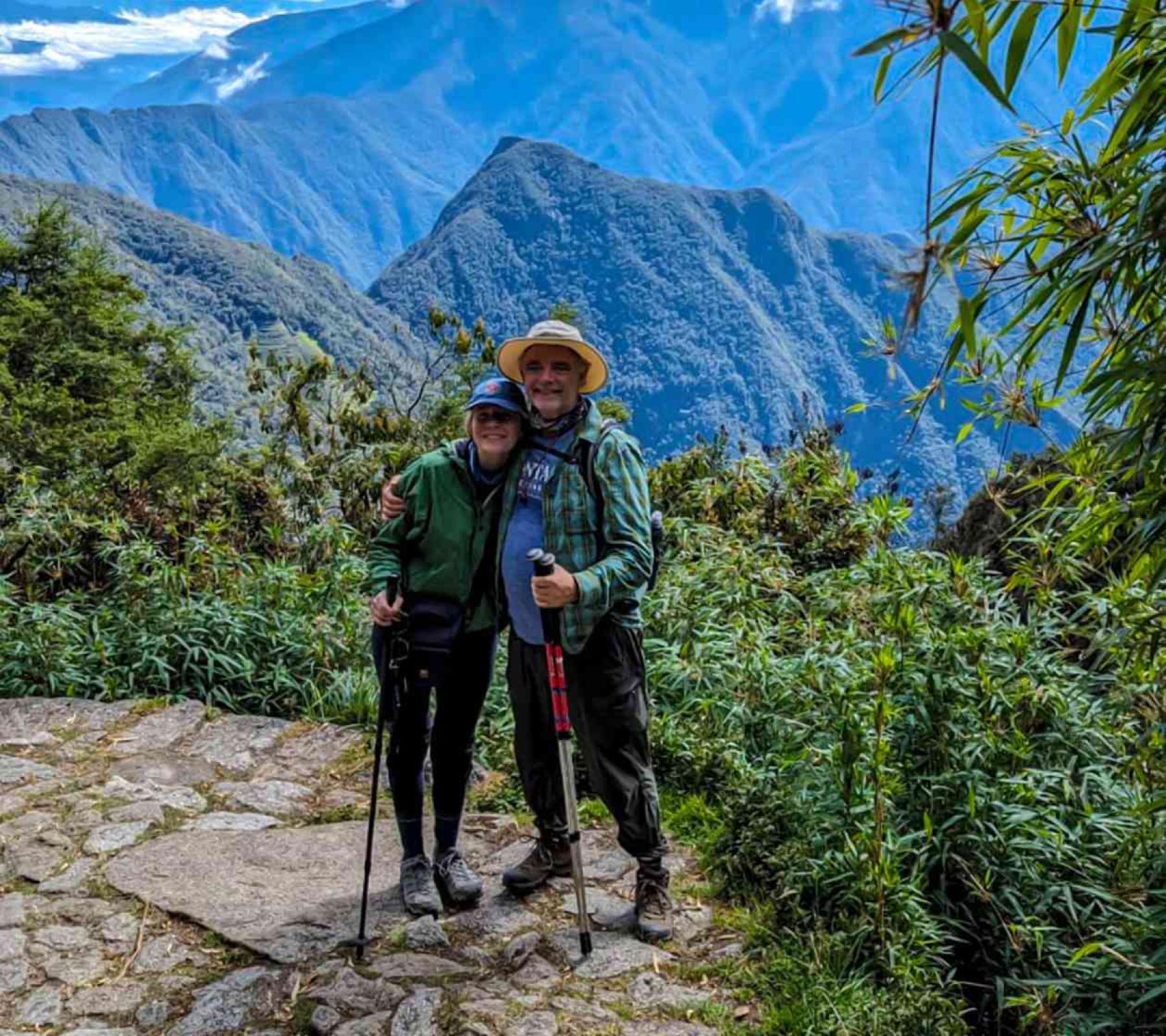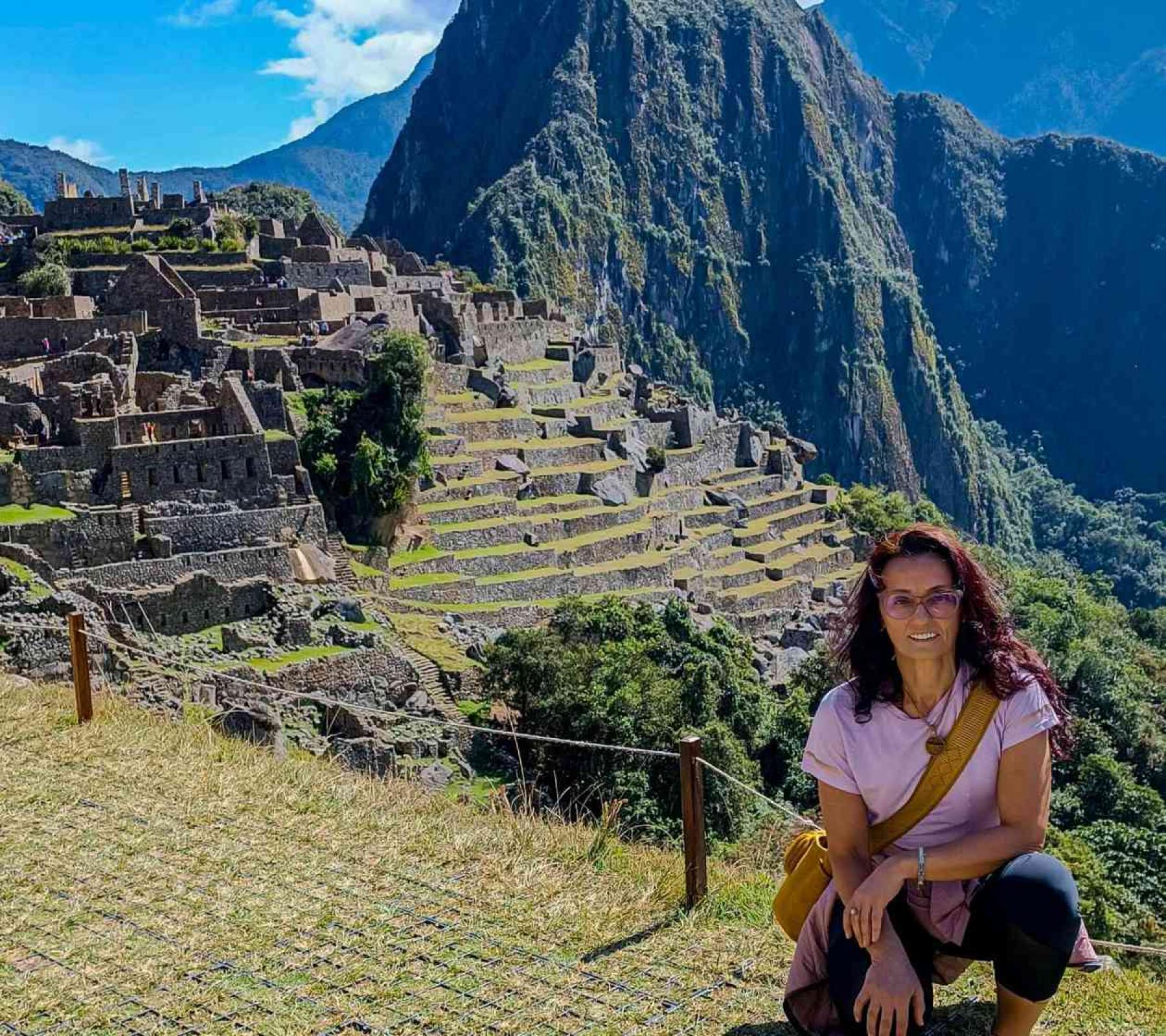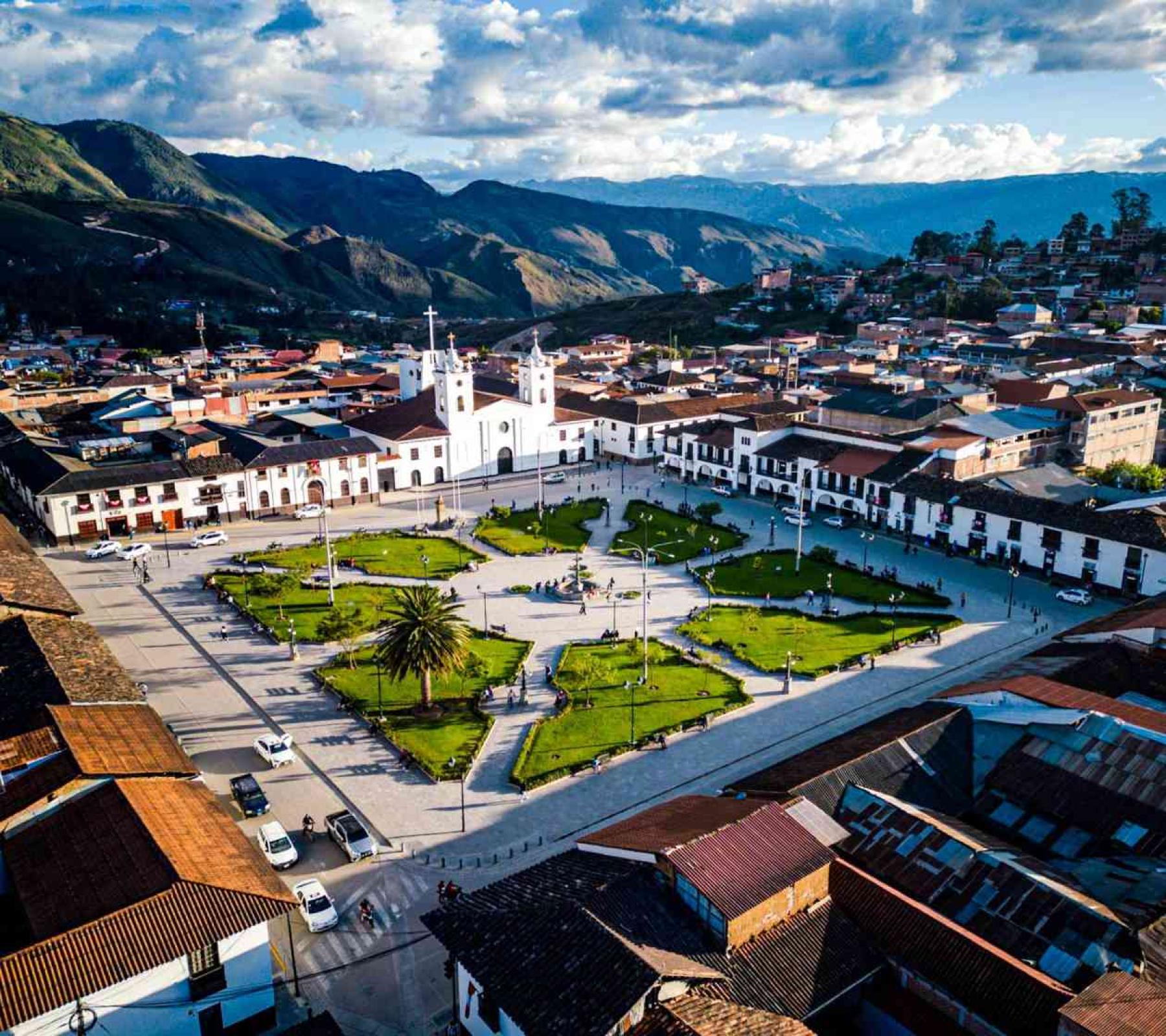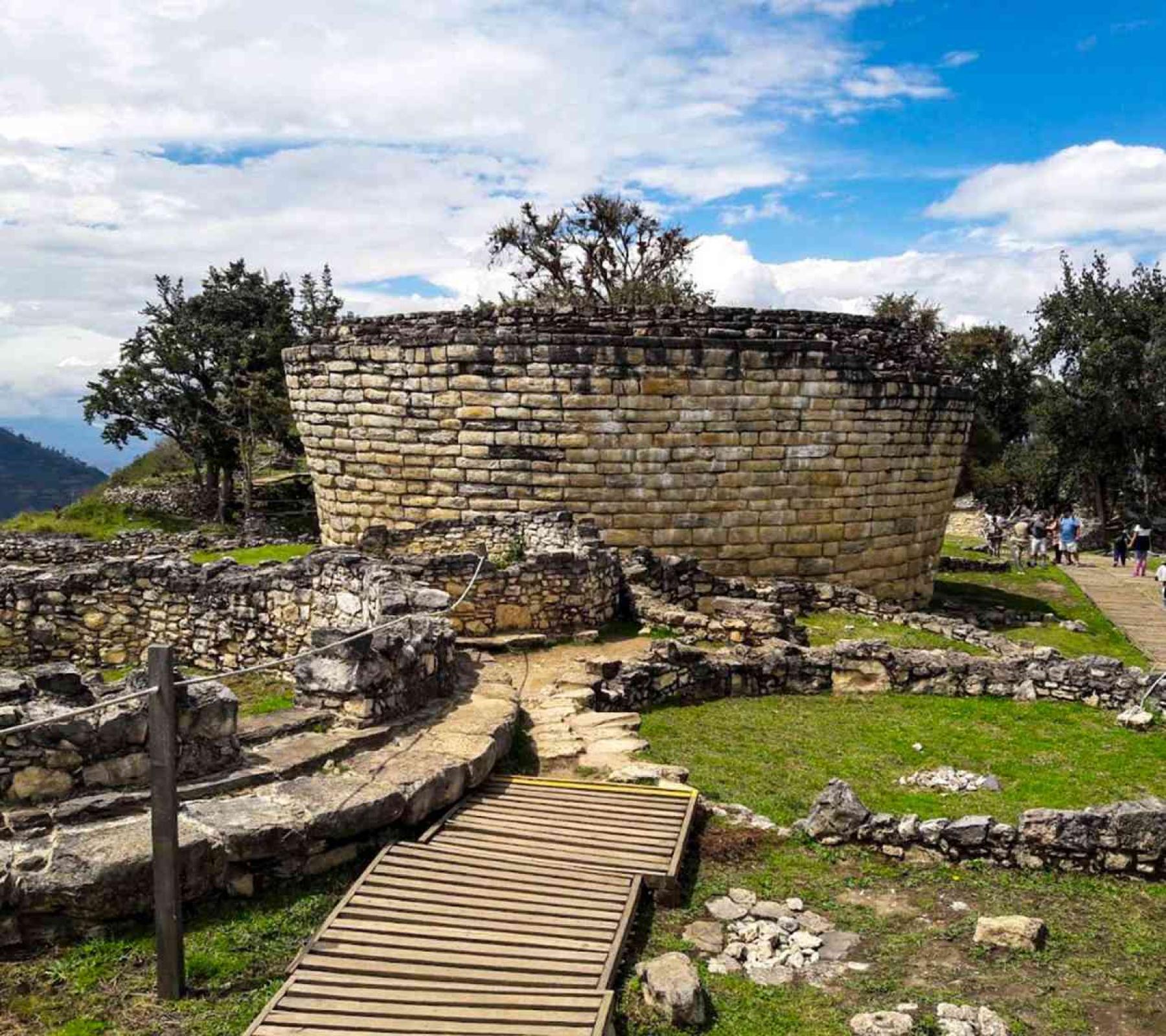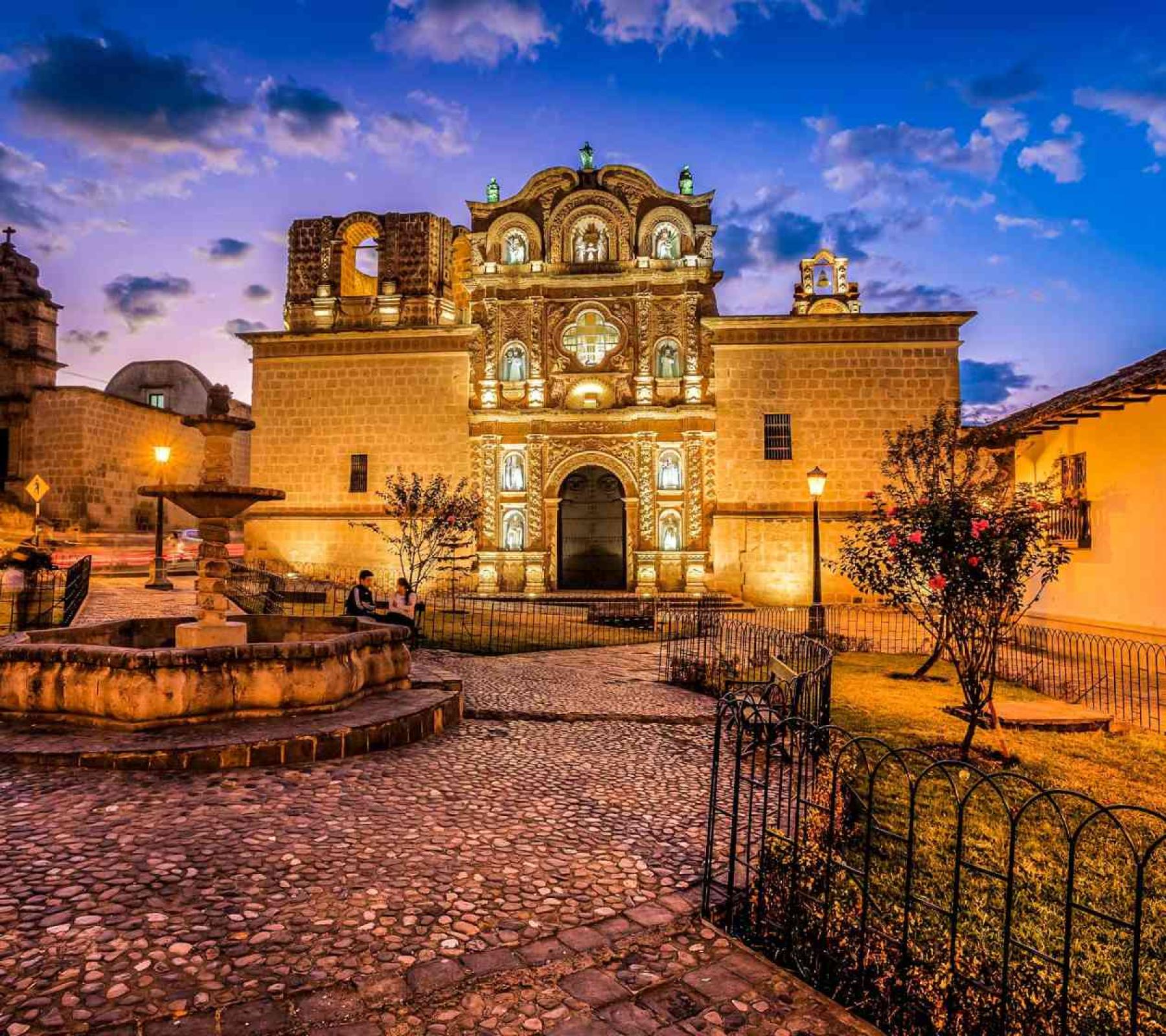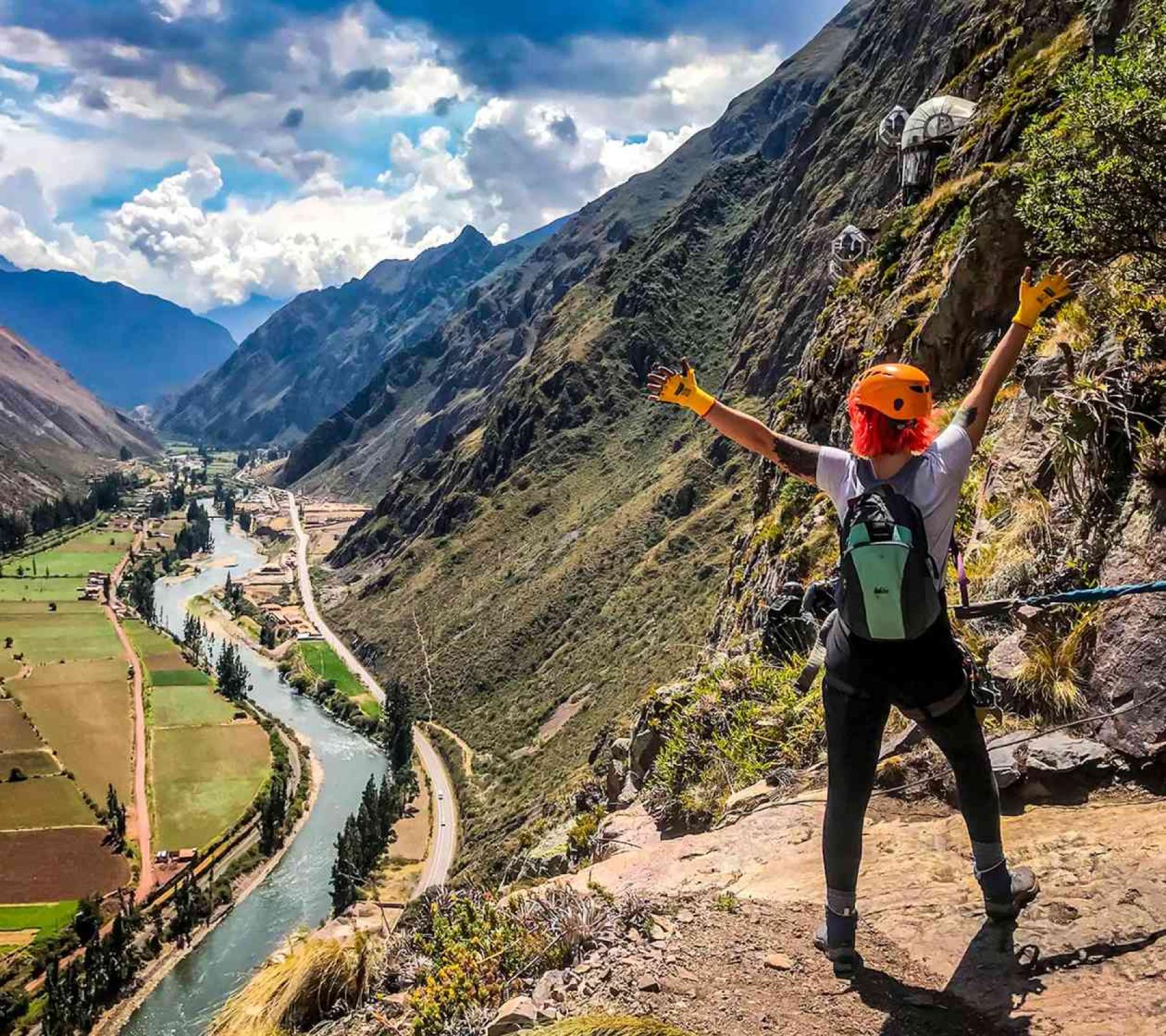Chachapoyas Peru Tour | Kuelap Fortress | Inca Trail Machu Picchu
Experience a unique journey through Chachapoyas as you visit the impressive Kuelap Fortress, one of Peru's most treasured pre-Colombian architectonic.
Description
This tour takes you on a journey to explore some of Peru's most impressive architectural treasures created by ancient pre-Columbian civilizations. First, you'll visit the massive Kuelap Fortress, often referred to as the "Machu Picchu of Northern Peru". Built by the mysterious Chachapoyas, also known as the Cloud People, around 750-800 AD, it is the largest stone structure in the Americas.
Next, you'll travel to the iconic Machu Picchu itself. This majestic Incan city was constructed by Pachacutec, the greatest Inca ruler, in the 15th century. It remained hidden from the Spanish conquerors and the rest of the world until 1911. You will trek along the famous Inca Trail to reach this wonder, adding a special touch to your adventure.
Both of these incredible sites are located in the Andes highlands—Kuelap in the north and Machu Picchu in the south of Peru.
What to Expect
Your tour begins with a flight from Lima to Chiclayo, a northern Peruvian city, where you'll explore monuments of the pre-Inca Moche civilization. From there, you'll head to the Chachapoyas region to discover the cultural wonders of the Chachapoyas people, including the Kuelap Fortress, burial sites, and museums. During your visit to Cajamarca, you will start learning about Incan culture through the City Tour and a visit to Baños del Inca. After that, you’ll fly back to Lima before heading to Cusco. In Cusco, the second part of the tour kicks off, allowing you to explore the Sacred Valley of the Incas and hike the famous 4 day Inca Trail to Machu Picchu.
Quick Itinerary
Day 01: Arrival to Lima
Day 02: Flight to Chiclayo/Sican Museum Tour
Day 03: Moche Tour
Day 04-05: Chachapoyas Tour
Day 06: Kuelap Tour & Leymebamba Tour
Day 07: Travel to Cajamarca
Day 08: Cajamarca City Tour + Baños del Inca Tour
Day 09: Cumbe de Mayo Tour
Day 10: Flight to Lima
Day 11: Flight to Cusco
Day 12: Sacred Valley of the Incas Tour
Day 13-16: Hiking the Inca Trail to Machu Picchu
Day 17: Cusco City
Day 18: Departure
Highlights of the Chachapoyas
- Discover three great pre-Columbian civilizations: Moche, Chachapoyas, and Incas.
- Learn about the ancient Moche through visits to the Sican Museum, Lord of Sipan Museum, and the Pyramids of Tucume.
- Visit the mystical Kuelap Fortress on the Kuelap Tour.
- Explore museums and burial sites showcasing well-preserved Chachapoyas mummies and statues during the Chachapoyas Tour and a trip to Cajamarca.
- Take a City Tour of Cajamarca.
- Visit the pre-Inca site of Cumbe de Mayo.
- Hike along the Inca Road near Cajamarca.
- Continue your adventure to southern Peru by flying to Cusco.
- Visit Cusco, the former Inca capital, and discover its historical monuments and the breathtaking landscapes of the Sacred Valley.
- Discover the 4 day Inca Trail with the assistance of a professional guide, a cook, and porters.
- End the trek with a guided tour of the magnificent "Lost City of the Incas", Machu Picchu.
- Relax in Cusco after completing the hike.
Crew: You will be accompanied representatives in Lima, Chiclayo, and Cusco, as well as professional bilingual tour guides, cooks, and porters for the Inca Trail.
Accommodation: You’ll stay in 3 and 4 star hotels for 14 nights and camp for 3 nights.
Meals: The tour includes 17 breakfasts, 4 lunches, 3 dinners. Please budget an additional USD 150-200 for meals not covered.
Transportation: The tour includes 3 domestic flights, tourist vehicle and private van transfers, and 1 train ride (Expedition Class).
Inca Trail Advisory:
Check our Inca Trail booking policies. If you prefer not to hike the Inca Trail or the trail is fully booked, you can choose one of these alternatives:
- Lares Trek to Machu Picchu, one of the alternative treks.
- Machu Picchu by Train, a less physically demanding option.
Itineray Details
Day 01: Arrival to Lima
Today is simply an arrival day with no planned activities, allowing you to arrive at any time. Once you reach Lima's airport, our representative will be there, holding a sign with your name, ready to escort you to your hotel. Lima, the capital of Peru, is also known as the "City of Kings." The Plaza de Armas, the main square, is the heart of historic Lima, where you can see the Cathedral, the Government Palace, and the Archbishop's Palace.
Day 02: Flight to Chiclayo and Visit to the Sican Museum
This morning, we will take you back to the Lima airport for a flight (about 1.5 hours) to Chiclayo in northern Peru. Upon arrival, our representative will greet you and take you to your hotel. Once you're settled, we'll head out to visit the National Museum of Sican, located in the nearby village of Ferreñafe. The museum showcases gold and silver treasures from a tomb found at Huaca El Loro (The Parrot's House) in the Pomac Forest - Batan Grande. After the museum visit, we return to your hotel in Chiclayo, and you have the rest of the day free to explore.
Chiclayo, located 770 km north of Lima and 509 km south of the Ecuadorian border, is the capital of the Lambayeque region. It is called the "City of Friendship." Some of the main sights include the Cathedral in the Principal Park, built in a neoclassical style in 1869, and the Municipal Palace, constructed in 1919. Other landmarks include the 19th-century Veronica's Chapel, St. Anthony Basilica, and the Elias Aguirre Square, built in 1924. You can also visit the busy Model Market, known for its medicinal plants used by local shamans, especially during the "Healing Months."
Day 03: Moche Culture Tour
Today, we head southeast to visit Huaca Rajada, near the village of Sipan, where the tomb of the Lord of Sipan was discovered. We'll tour this archaeological site and its museum. Afterward, we will stop in Lambayeque for lunch (not included) before continuing to the Tucume Pyramids to explore this ancient complex and its museum. To end the day, we visit the Lord of Sipan Museum, where you can see the gold and silver artifacts from the tomb of this ancient Moche leader. Around 6 p.m., we return to Chiclayo.
Day 04-05: Chachapoyas Adventure
We have a long journey ahead as we travel to the mountain town of Chachapoyas. Along the way, you’ll witness a dramatic change in scenery, starting with the coastal desert, transitioning into the Andean highlands, and passing through semi-arid valleys. By sunset, we reach the picturesque Utcubamba Valley and the charming town of Chachapoyas, where we’ll stay overnight.
On the second day, we head to the Karajia site (48 km northeast of Chachapoyas), known for its burial chambers. Here, you will find 2.5-meter-tall sarcophagi perched on a cliff, inaccessible from below. These clay structures, painted white with red and ochre details, were made by the Chachapoyas civilization. Skulls placed on top of the sarcophagi add to their eerie uniqueness. Originally, there were eight sarcophagi, but one was destroyed by an earthquake in 1928. Radiocarbon dating places their creation in the 15th century.
Next, we continue to the "Town of the Dead" (Pueblo de los Muertos), another burial site located on a mountain cliff. Here, you can see conical, human-like sarcophagi, along with cave paintings featuring animal-like figures. The Utcubamba Valley and Gocta Waterfalls can be viewed from this spot. By late afternoon, we return to Chachapoyas, giving you some time to explore the historic center.
The Chachapoyas people, known as the "Cloud Warriors," thrived in the cloud forests of the Amazonian Andes from around 750-800 AD. They were skilled in agriculture, architecture, and stonework. Their fortified city of Peru Kuelap is one of the best-preserved monuments in the region and was likely built for defense against the Wari culture. The Chachapoyas constructed their cities on hills and cliffs, while their burial sites were placed in hard-to-reach locations, often on cliff faces that remained untouched for centuries. The Chachapoyas resisted the Incan Empire's expansion until the mid-15th century, showcasing their military prowess and strategic intelligence.
Day 06: Kuelap Tour & Leymebamba Visit
After breakfast, we set off in a tourist vehicle to visit the ancient Kuelap city, a journey of about 3 hours. Upon arriving at the Malca Pampa archaeological zone, we take a short 20-minute walk to reach Kuelap. There, we’ll enjoy a 3-hour guided tour where our guide will explain the history and layout of the city. We'll explore key areas such as the ceremonial site, the main temple, the circular houses, and both the lower and upper parts of the city. After our Kuelap tour, we’ll have lunch (not included) before heading to Leymebamba. In Leymebamba, we visit the Mallqui Centre Museum, which holds more than 2,000 artifacts, 200 mummies, and an impressive collection of "Quipus" from the Lake of the Condors mausoleums. The museum also displays textiles, pottery, and weapons from ancient Peruvian cultures. We wrap up the day with a brief tour of Leymebamba before returning to our hotel in Chachapoyas.
Kuelap is an enormous fortress built by the Chachapoyas people, often called the "Machu Picchu of Northern Peru." The fortress contains more than 400 structures and is surrounded by towering stone walls that reach up to 18 meters in height. Spanning 600 meters in length, it's the largest stone complex in both North and South America! It is believed to have been built around 800 AD as a defense against Wari invasions. The fortress is draped in orchids and bromeliads, adding to its beauty. Other notable Chachapoyas sites include Revash burial grounds, Gran Pajáten, Cerro Olán ruins, Gran Saposoa, Atumpucro, and the Lake of the Condors. Remarkably, only 5% of Chachapoyas sites have been excavated!
Day 07: Journey to Cajamarca
In the morning, we begin our trip to Cajamarca. On the way, we stop at Balsas, where there is a museum that features a large collection of mummies. There's also a beautiful orchid garden to explore. As we continue, we'll see breathtaking views while crossing two mountain ranges and the Maranon Canyon. By the early evening, we arrive in Cajamarca (2,650 m above sea level) and settle into our charming hotel.
Cajamarca is the most important city in the northern Andes of Peru and serves as the capital of the Cajamarca region. With its mild climate, the city was an important center in pre-Inca times. It became historically significant in 1532 when the last Incan ruler, Atahualpa, was captured here by Spanish conquistadors, marking the fall of the Incan Empire.
Day 08: Cajamarca City Tour & Inca Baths Visit
After breakfast, we hike to the Santa Apolonia Hill to get a panoramic view of Cajamarca. We then explore the historic city center, visiting the main square, the San Francisco Convent, the Cuarto de Rescate (the room where Atahualpa was held), the Belen Monument Complex, and several museums. Next, we travel 6 kilometers outside the city to "Baños del Inca", a spa that was a favorite retreat for Inca rulers such as Pachacutec, Tupac Yupanqui, Huáscar, and Atahualpa. The thermal waters reach 79°C and are known for their healing properties—some of the most powerful on the continent!. By evening, we return to Cajamarca for an overnight stay.
Day 09: Cumbe de Mayo Tour
Today, we visit Cumbe de Mayo, a pre-Inca archaeological site located 19 km southwest of Cajamarca at an altitude of 3,500 meters. The site is famous for its ancient aqueduct, which is about 8 km long and was built to collect rainwater and direct it towards the Pacific Ocean. It is thought to be one of the oldest structures in South America, dating back to around 1500 BC! The name "Cumbe de Mayo" comes from the Quechua phrase "Kumpi mayu," meaning "well-built water channel." The site also contains petroglyphs and caves nearby. The surrounding landscape features volcanic rock formations called "Los Frailones" or "Rocky Monks," shaped by centuries of erosion. Cumbe de Mayo served not only as an irrigation system but also as a ceremonial center focused on water worship, much like Qenko in Cusco or Sayhuite in Apurimac. During our visit, we’ll also walk along a segment of the ancient Inca Trail. Afterward, we return to Cajamarca for the night.
Day 10: Flight to Lima
In the morning, we transfer to the Cajamarca airport for a flight to Lima. Upon arrival, our representative will meet you and escort you to your hotel, where you can either rest or explore Lima at your leisure. This marks the beginning of the second phase of our journey, leading from Lima to the Inca Trail.
Day 11: Flight to Cusco
We head to Lima’s airport for your flight to Cusco City in the morning. Upon landing, our representative will greet you at the Cusco airport holding a sign with your name. After a warm welcome, you’ll be taken to your hotel. The rest of the day is yours to relax, explore the city, and adjust to the high altitude.
Cusco is the oldest continuously inhabited city in the Americas and a major hub for travelers. Visitors come from all over the world not only to experience its unique culture but also to explore the ancient Incan heritage still present in the city's stone streets.
Cusco also boasts many colonial churches, the most notable being the Cathedral in the main square. Construction began in 1559 and took a century to complete! The Cathedral is home to the largest collection of colonial art in the city, and you can find the tomb of the famous Incan historian, Garcilaso de la Vega, just inside the entrance. Other churches worth visiting include La Compañía, La Merced, and San Francisco.
Day 12: Sacred Valley of the Incas Tour
Today, we head to the Sacred Valley of the Incas, a key region for the Incas as it provided much of their food. This fertile valley still supplies many goods to the city of Cusco. Our day includes a visit to the impressive ruins of Pisaq and its popular handicraft market. Next, we stop in Urubamba, known as the heart of the valley, where we have the chance to enjoy a buffet lunch with Andean flavors (not included). Afterward, we make our way to Ollantaytambo, a charming town with a notable Incan fortress, and prepare for the hike ahead, one of the trip's highlights!
Ollantaytambo gives you a glimpse of what's to come on the Inca Trail. The town and its fortress offer stunning views over the Urubamba River Valley. We spend the night here before starting our famous trek to Machu Picchu the next morning.
Day 13-16: Inca Trail to Machu Picchu
The 4 day Inca Trail hike to Machu Picchu is challenging but absolutely worth it! The trek is tough but manageable for those in decent physical condition. The 44 kilometer (27-mile) route includes steep sections and crosses three high passes, with the highest at 4,200 meters (13,776 feet). Nights can get cold, so be prepared for sub-zero temperatures. Rain is also possible, even during the dry season.
We begin the trek with a morning drive to Km 82, the starting point of the hike. Remember to bring your passport, as it will be checked at the entrance, and you’ll even get a stamp for completing the Inca Trail! Our experienced porters and guide ensure a smooth journey, allowing you to fully enjoy the amazing Incan ruins (Llactapata, Runkuraqay, Sayacmarca, Phuyupatamarka, and Wiñay Wayna) and breathtaking mountain landscapes.
The trek ends with a final ascent to the Sun Gate (Inti Punku), where you'll witness the sunrise over the legendary Machu Picchu. Afterward, we enjoy a 2.5 hour guided tour of the "Lost City of the Incas." In addition, depending on the circuit chosen to visit the Inca citadel, you can climb Huayna Picchu (a 45 minute walk) or Machu Picchu Mountain (approximately 1.5 hours) to enjoy panoramic views of the site. Later, we head down to Aguas Calientes, where we take a train back to Cusco, arriving in the evening.
Note: The Inca Trail is closed every February for maintenance. Additionally, closures can happen due to bad weather or other uncontrollable factors. In these cases, we offer the alternative 4 day Lares Valley Trek.
FREE OPTION: If hiking isn’t for you, you can either return to Cusco or spend two days relaxing in the Sacred Valley. In this case, you would travel to Aguas Calientes by train (Expedition Class), stay overnight in a hotel, and take a bus to Machu Picchu the next day. There, you’ll reunite with the group that hiked the Inca Trail. This option is available at no extra cost.
IMPORTANT: If you choose not to hike, please inform us in advance (a few weeks ahead) so we can secure your train tickets. Without enough notice, we cannot guarantee this option for free.
Feel free to contact us with any questions!
Day 17: Cusco City
Today is a free day to explore Cusco, the historic capital of the Inca Empire. Take time to visit local markets, shop for souvenirs, or join optional activities. It’s also a chance to relax and get ready for your final night in the city.
Day 18: Departure to Lima
We transfer you to the airport for your flight to Lima.
Note: We can arrange a return flight to Lima upon request.
Included
Included
- Welcome by our Representative at arrival;
- All airport transfers at arrival and departure;
- 3x domestic flight: Lima - Chiclayo, Cajamarca - Lima, Lima - Cusco;
- Accommodation: 3 and 4* hotels (14 nights), camping (3 nights);
- All entrance fees according to the itinerary, an Inca Trail permit including;
- Professional bilingual Tour Guides as per itinerary;
- A professional Cook for the Inca Trail hiking;
- Porters to carry food, camping and cooking equipment and 7 kg of each passenger's stuff during the Inca Trail;
- Meals: 17x breakfast, 4x lunch, 3x dinner and 3x afternoon hot beverages during the hiking to Machu Picchu;
- Camping equipment for the Inca Trail: personal double tents,therm-a-rest, tables and chairs, a cooking tent with cooking equipment, dining and toilet tents;
- Food for the Inca Trail;
- A sleeping bag (for up to -5°C) for the Inca Trail hiking;
- Tourist land transportation in accordance with the itinerary;
- Tourist train (Expedition Class) from Machu Picchu to Ollantaytambo;
- A shuttle bus down from Machu Picchu to Aguas Calientes Town.
Not Included
- Pre & post tour accommodation,
- Last flight Cusco - Lima,
- International flights nor airport departure taxes,
- Meals not mentioned,
- Travel insurance,
- Tips and baggage portage (Please note: It is a custom to give tips in Peru; however, it is not obligatory.),
- Other extras not mentioned.
Meals budget: Please allow USD 150-200 for meals not included.
Single room: Please note that if you have booked the "Single Room" option for this tour, you receive your own single room for all overnights and a single tent for the 4 days Inca Trail Trek.
Local flights: There are three local flights included in the cost of your tour. It is very important that we have got your passport details at the time of booking in order to process all air tickets! National flight tickets are issued locally and will be given to you prior to each flight departure!
Essential Information
Suggest Items to this Chachapoyas Tour
A kind of luggage you need to take with depends on a kind of tour you plan to undertake, a part of the country you like to visit, a year season and a length of your trip. In general, you should pack as lightly as possible because you carry your own luggage during most of our tours (however, there are not long walking distances – up to 30 minutes). We recommend you to keep weight of your luggage under 10 kg (22 lb.).
Most of travelers use a suitcase. However, a big backpack would be more suitable. In any case, please do not forget a small rucksack that you will need for daily travels (to carry your bottled water, camera, snacks, etc.). It is better to avoid a wheeled luggage and use luggage with shoulder straps.
What Kind of Clothing to Pack to Peru
Vestment to take with you depends on a year season in Peru and a part of country you are going to visit.
When visiting coastline of the Northern Peru and surroundings of Lima, then you need to pack some light cloths (for example, shorts, skirts, dresses, T-shirts), flip-flops, sandals, a head cover as a protection against the Sun (a hat or a cap), sun protection cream, sunglasses, mosquitos repellent and swimsuit, of course.
If you plan to visit Peruvian mountains (Andean mountain range or Altiplano), then we recommend you to take some trousers suitable for hiking, shorts, T-shirts and trekking shoes for the days; and sweaters, fleeces, hats, scarves and warm jackets for the nights. You also should take a sun protection cream, sun glasses and in some cases, mosquito repellent (depending on a route chosen). It is very convenient to have a light rain-gear available in a daypack (e.g. a waterproof poncho or jacket and/or waterproof trousers) as weather changes quickly and rains can suddenly occur.
If you like to see the Amazonian rainforest (Manu, Puerto Maldonado, Iquitos, etc.), then the most important item of your luggage must be a mosquito repellent (20 DEET as a minimum recommended)!! Except that, you should take some light clothing with long sleeves and long trousers (to put into your shoes as a kind of protection against insect). You should not forget some waterproof cloths (especially, if you plan to visit the rainforest during a rainy season), comfortable and closed footwear, long socks and a hat.
What To Bring
- Passport Original and copies
- Travel insurance(+ copies for a case of lost),
- Flight tickets,
- Cash in USD or credit cards,
- Our service voucher (sent by us to you),
- Entry visa and a proof of vaccination (if applicable),
- Day pack (to carry your personal items during daily travels),
- Warm clothes such as a jacket, a fleece (thermal clothing is also recommended for cold nights during camping),
- Hat or a cap (to protect you against the Sun, rain as well as cold),
- Sun cream or sun block,
- After-sun cream or hydrating cream for face and body,
- Insect repellent– recommended minimum is 20% DEET (please note that no malaria has been reported during this trip!),
- Camera and its charger/batteries (please note that batteries are consumed quickly under cold conditions),
- Flashlight/headlamp + batteries,
- Handkerchiefs and toilet paper,
- Sufficient reserve of underwear,
- Snacks (biscuits, energy bars, chocolate, raw fruits, muesli, etc.)
Please note: we do provide a daily morning snack and our meal service is very complete and well supplied. The recommendation of taken own snack applies only for customers who like a specific snack that might not be in our menu.
- Bottled water for the first morning and a water bottle.
Important: plastic bottles are not allowed on the Classic Inca Trail! Please bring a metallic (alternatively Nalgene) bottles!
BOOK NOW
